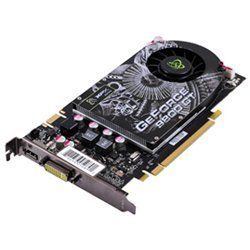
If you’re a “heavy” PC user or a gamer, your computer’s graphics driver would be important to you, and that’s rightly so since it allows your OS to use your computer’s graphics hardware. Now, it is important to keep your computer’s graphics driver updated so that you keep getting the best experience from your computer’s graphics hardware.
In this post, we would be highlighting the steps of updating the various types of graphics cards.
Related:
How to hide Steam games from friends
How to update your Graphics Driver for the best gaming experience
Step 1: Identify your Graphics Card
The first to do when trying to update a graphics card is to first identify the computer’s graphics hardware, and the associated built-in and third-party system information utilities. You could do that by looking into the system information; the easiest way to see your PC’s system information is by typing “System Information” on the Windows search box.

When you’re in the System Information window, look over to the left-hand side, and open up the “components’’ subcategory. In there, you’d find “Display”; click on it, and a list of display information would appear on the right-hand side. On the right-hand side, search for “Adapter Type” or “Adapter description”; it has the information about your graphics adapter model.
Step 2: Get the latest update
Upon checking your graphics card information, you may find out that it is either Intel, AMD or NVIDIA. Some PCs are a combination of Intel and Nvidia, and if that’s the case, you would want to upgrade the NVIDIA card for your gaming experience.
For some integrated graphics cards, their manufacturers don’t release drivers officially. Some others have their graphics cards released by the manufacturers but aren’t going to be updated frequently. Generally, you can update your graphics driver from your graphics hardware manufacturer’s website.
However, you would need to know the exact details of your adapter (you can find that in the “Device Manager” window), and input these details on the website to download the associate drivers directly. This applies to Intel, AMD, and NVIDIA adapters.
You can also let the website carry out a scan on your system, to automatically determine what driver/drivers you require. Although, you might be required to install a utility software that would perform the scan.
For NVIDIA adapters, there’s a special utility software called NVIDIA GeForce Experience. This utility would run in the background and would download and install the Graphics driver updates, or just notifying you of when they are ready to be downloaded.
The NVIDIA GeForce also optimizes your game settings (for most PC games), although it is an option you can turn off if you don’t want. In general, updating your graphics driver largely depends on how long the manufacturer supports the hardware.
Older graphics hardware is likely to be unsupported forever since they (the manufacturers) would move them to a stable driver release without releasing any more optimized driver for it. For graphics cards 5 years and older, updating its drivers solely depends on if it’s still supported by the manufacturer.





Leave a Reply